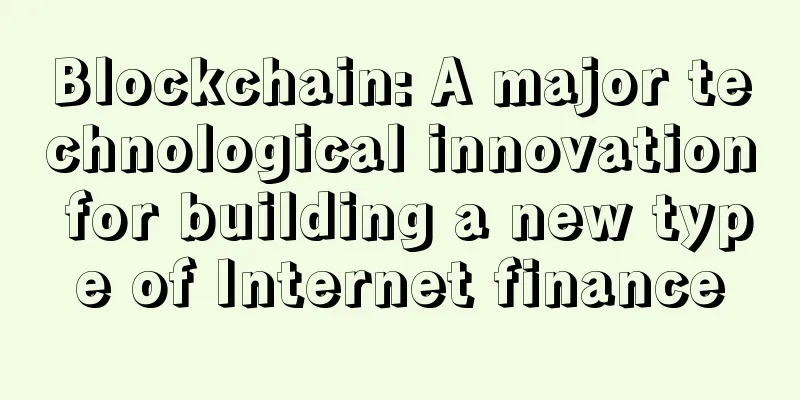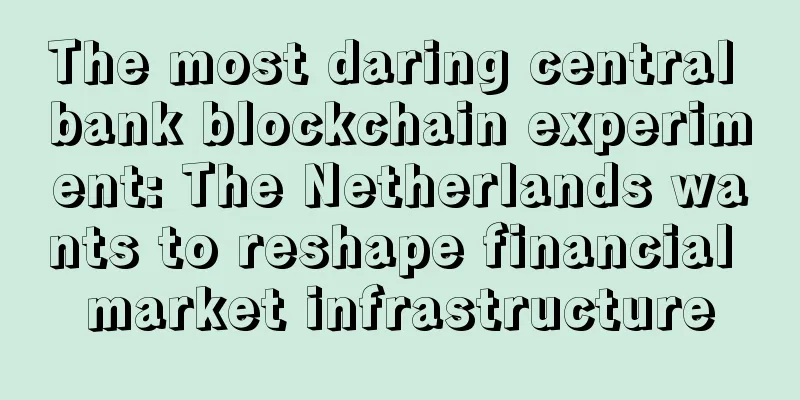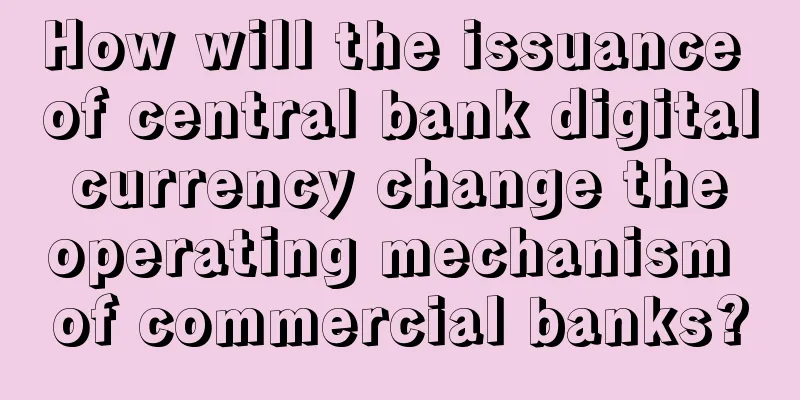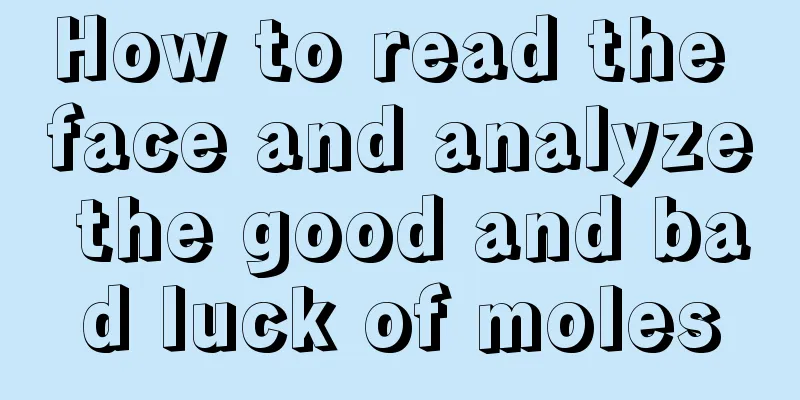Blockchain: A major technological innovation for building a new type of Internet finance

|
Editor's note: The author is Zhang Jialin, executive director of the China Finance 40 Forum and chairman of Beijing Aiyi Xinrong Capital Management Co., Ltd. Beijing Aiyi Xinrong Capital Management Co., Ltd. is a professional institution focusing on equity investment management of listed companies and providing structured financing financial services. Blockchain is the core technology that supports Bitcoin, but it is a completely independent system. It should be said that Bitcoin is an innovative application of blockchain technology. In fact, it can be applied to any form of "currency" or "economic value". The author believes that blockchain technology has no innovation in financial theory, but it is a milestone innovation in financial technology. The prospect of building a new generation of Internet financial services based on this technology is huge. This article mainly introduces the technical principles, operating mechanisms and innovations of blockchain from a financial perspective, the current status of its application at home and abroad, and analyzes the important strategic significance of vigorously developing the application of blockchain technology for promoting my country's credit economy and building the discourse power of the Internet economic order. 1. Technical principles and operating mechanisms of blockchainBlockchain is an open autonomous ledger system. First of all, it is a ledger system that records all transaction data in double-entry accounting: all detailed historical data of where each unit of currency comes from and where it has been. Open means that the data it stores is open to anyone. Except for the encrypted privacy information of the transaction subject, anyone can query the data (encrypted data can also be seen after authorization). Autonomy means that the system operates on the basis of the automated consensus mechanism formed by public algorithms and rules. This ensures the accuracy and authenticity of every transaction recorded on the blockchain. 1. Blockchain’s bookkeeping method The blockchain records all transactions since the first "currency" [1] transaction. Each transaction is recorded in double-entry bookkeeping. Since the double-entry bookkeeping records of the debit and credit [2] of any transaction are kept together, the accounting relationship between the credit and debit of each transaction is formed: the credit in a transaction can always correspond to the debit in the previous transaction. All transactions are linked into a "chain" structure through double-entry accounting (see Figure 1). In this way, the life history of each "currency" can be described very accurately: due to the benefits of double-entry bookkeeping, starting from the latest record and tracing back step by step, we can know not only where each "currency" has been - what transactions this "currency" has experienced, but also where it came from - tracing back to its source [3] . Since the origin of each "currency yuan" is very clear, it brings great benefits to identifying and verifying transactions. If Zhang San wants to pay Li Si 100 "currency yuan", Li Si can query the origin of Zhang San's 100 "currency yuan". Li Si traces back to the source of the 100 "currency yuan" and finds that the latest owner of the 100 "currency yuan" is Zhang San. Li Si can then rest assured that he can receive the money [4] . If Li Si cannot trace the source of the 100 "currency yuan", it means that the 100 "currency yuan" was not legally produced, and Zhang San should not own the 100 "currency yuan". Such transactions are deemed illegal and cannot be executed. Only those "currency yuan" transactions that can be traced back to the source "origin" are deemed legal and can be executed [5] . All verified transactions are permanently stored in the blockchain. Obviously, as the number of transactions increases, if the above method is used to query the origin archives of each current "currency yuan" transaction to trace its origin, it will be very time-consuming to verify this transaction according to the above method because the "transaction chain" that needs to be traced back is very long. Blockchain solves this problem in a very clever way: The blockchain uses the "blocking" method to package transactions that occur within a certain period of time into a "block". Each block maintains the link pointer of the previous and next blocks. Since blocks are generated in chronological order, a new block will be added every once in a while. This block is connected to the previous block, and all blocks form a "chain" structure. The blockchain can be viewed as a giant ledger that can be infinitely “added to pages”. Each block can be viewed as a “page” of this ledger, and each page of the ledger records one or more transactions. Every time a block is added, the block’s stack height [6] increases by 1. The blockchain uses an algorithm called "Proof of Work" and some consensus rules to ensure that only legitimate blocks can be added. Once a block is verified and linked to the blockchain, it will be permanently stored and cannot be modified by anyone or any machine [7] . The legitimacy verification of each block includes the legitimacy verification of all transactions in it and the verification of the data association rules between blocks. The intuitive benefit of using the block approach is that it does not need to traverse the entire ledger for each transaction to be verified, but only needs to go back to the most recent block and find the data in this block that can verify the current transaction [8] . The schematic diagram of the creation process of a new block [9] is shown in Figure 2:  2. The operation mechanism of blockchain The idea of traversing all transaction records of each "currency" and tracing back to the source to verify the transaction is not new. This was also the original intention of designing the double-entry bookkeeping method and the financial audit system [11] . However, it is impossible to do so due to time, cost, privacy protection and other legal constraints. The initial solution was that the two counterparties verified the transaction through a highly trusted third party that had no vested interest in the transaction, thereby solving the problem that the counterparties could not directly establish trust due to conflicts of interest. However, as third parties have taken on more and more trust intermediary functions, the role of third parties has gradually evolved from the previous "intermediary" to the "center" of the trust network: it is the best choice for all transactions to be conducted through this "center". Banks, The main problems currently exposed by this mechanism are:
The core design idea of blockchain is to use existing mature technologies and conditions to build a pure, cross-border "interest-free" trust network verification mechanism to make Internet economic activities simpler and easier. It mainly uses double-entry accounting, peer-to-peer network architecture, consensus-based autonomous protocols based on machine algorithms, secure data storage and transmission usage rules, sustainable incentive mechanisms, and open systems to maximize "decentralization" to ensure that the system is "neutral" and "trustworthy" to any user, thereby establishing a trust environment for the economic activities of all parties to the transaction. Let's see how blockchain works: Blockchain is an autonomous system built on a peer-to-peer network. Its operating system mainly includes the following parts:
When a blockchain system daemon runs on a server on the network, it marks the "birth" of a blockchain. Usually, the first block (Block 0) is created by the system daemon. Then the full nodes of the blockchain begin to expand: computers that are willing to become nodes join in and connect these nodes according to the peer-to-peer network protocol. These full nodes download the programs to be run from the network and copy all the data of the blockchain to the local. This process continues. When the number of full nodes reaches a certain level, some transactions have actually occurred [13] . Then, miner nodes join in one after another. Since there is already "currency yuan" in the network, users can start to trade with "currency yuan". New transaction requests are constantly sent by user interface applications, and full nodes in the network constantly monitor transaction requests in the network and verify each transaction by traversing the "currency yuan" background archive. Verified transactions cannot be directly stored in the blockchain. They need to be stored in a new block together with other transactions that occurred in the adjacent time before they are permanently stored in the blockchain. Except for the first few blocks [14] , all blocks are completed by mining nodes. A large number of mining nodes automatically collect the latest transactions at regular intervals and package them into new blocks. The blockchain network sets a proof-of-work puzzle based on "hash computing power" for each new block package to ensure that the block data is recorded accurately. Only the first mining node to complete this puzzle can Only then can a new block be added to the blockchain. The blockchain network incentivizes a certain amount of "currency yuan" for each miner node that successfully adds a new block as a reward for its "hash computing power". After a new block is added, the full node immediately notifies other nodes in the network to update the local database. The blockchain continues to increase in chronological order and transactions. Since the creation of the 0th Bitcoin block (also known as the "Genesis Block") on January 3, 2009, the stack has reached 376,415, and the corresponding blockchain has 376,415 blocks, recording a total of about 86 million transactions, with an average of more than 200 transactions in each block. The data volume of the entire blockchain is currently about 40G [15] . It can be seen that although the physical facilities of the blockchain belong to different economic entities, the programs running on these physical facilities are not private programs, but programs written in accordance with common specifications and protocols. The code adopts an open source structure, which means that any changes need to be reviewed by the open source community, so malicious modifications can be prevented. When these programs run on enough network nodes, no economic entity can control and own the blockchain [16] . Due to the use of consensus-based specifications and protocols, the blockchain forms an "autonomous" system: transaction verification, hash computing power, and network operation management services are all autonomous and do not require any human intervention. Of course, in order to maintain the survival of this "autonomous" system, economic entities that provide physical facilities and electricity expenses must be paid. The source of payment is naturally extracted from the services provided by the blockchain. The cost of each transaction is a very important technical indicator for evaluating the competitiveness of the blockchain. 3. Some technical problems of blockchain The biggest limitation of blockchain at present is that it can only process one transaction per second, that is, 1tps. VISA is 2,000tps. The improved blockchain processing speed can be increased to 7tps, which is still far behind the system of traditional financial institutions. Currently, it takes an average of 10 minutes to verify each new block, which means that it takes at least 10 minutes for any transaction to be confirmed and executed, while VISA takes a few seconds. The data size of blockchain is growing rapidly, currently reaching 40G. If the processing speed reaches the VISA standard, it is estimated that the amount of data added each year will exceed 1.42PB. This poses a big problem for the data transmission bandwidth between network nodes. 2. Innovations of blockchainBlockchain has not made any major innovations in financial theory, but it has made major innovations in solving the trust problem caused by information asymmetry at the financial level. Although most people know blockchain from Bitcoin, I want to emphasize here that blockchain itself is a completely independent system. It is not just created for Bitcoin. In fact, blockchain technology has richer and deeper connotations than digital currency. The core problem it solves is not "digital currency", but how to establish a "trust" ecosystem that satisfies the occurrence and development of economic activities in an environment of information asymmetry and uncertainty. To achieve these goals, I believe that the innovations of blockchain designers in the following aspects are particularly worthy of attention and research: 1. The design of the ledger system is very advanced and sophisticated . As discussed in the previous article, due to space limitations, I will not go into more detailed technical details here. With the development of blockchain technology, this ledger system has been further expanded and can record, verify and transfer any form of contract or property. 2. Blockchain methodology Global economic activities are viewed as a "space", which is artificially divided into multiple "subspaces" according to parameters such as administrative regions, jurisdictions, taxes, rules [17] , and currency zones. These parameters are the coordinates for measuring economic activities in each "subspace". To determine whether a transaction is feasible, in an abstract sense, we only need to see whether it can be "mapped" [18] to the coordinates of the subspace. When verifying a transaction in a subspace, we need to check each parameter one by one. When all requirements are met, the transaction is verified to be legal and compliant. Services [20] ; 2) An alliance is established between the "trust centers" of the two "subspaces" to jointly provide services for cross-space transactions [21] . Most current financial solutions adopt the above method. The designers of blockchain have created a completely new methodology. Blockchain is insensitive to parameters such as geography, legal jurisdiction, taxation, and monetary units. It builds autonomous norms of “automatic consensus” based on the principle of “greatest convention”. The upgraded blockchain technical norms [22] will be able to serve the “full spectrum of economic activities” on the Internet, including many applications in the economic, financial, and monetary fields [23] . Blockchain technology makes “planetary-level [24] ” services possible for the first time: Internet economic activities, like the Internet itself, must be “autonomous” to be viable. "Autonomy" must first be harmless and neutral, and secondly, it must be "consensus-based". Blockchain achieves this goal. 3. The general equivalent of blockchain bookkeeping - "currency yuan" The essence of a transaction is the transfer of a universal equivalent. So what is the universal equivalent of blockchain bookkeeping? Blockchain designers use the concept of universal quanta (translated by the author as "currency yuan") as the universal equivalent of their bookkeeping. The author believes that this is the most exciting part of blockchain technology innovation. The idea of "currency yuan" in blockchain comes from geometry. In blockchain, each "currency yuan" corresponds to a "coordinate", and the change of the "currency yuan" coordinate indicates a transaction. The completion of the transaction means that the owner of the "currency yuan" is transferred. All "currency yuan" in the blockchain have their own "coordinates" and are scattered in various blocks in the blockchain. It is very important to understand this core idea of blockchain. Before we start, we need to explain the Hash algorithm. The Hash algorithm maps input values of any length to shorter fixed-length binary values, which are called hash values. If the input value is changed by even one character, the subsequent hash values will be different. Conversely, it is computationally impossible to find two different input values with the same hash value, so the Hash value can be used as the unique absolute coordinate of the corresponding input value. Let’s look at the geometry of money in blockchain: The summary of a transaction is "Alice pay bob 100 at 2015/10/01/09:30/001", which describes Alice paying Bob 100 yuan at 9:30:001 on October 1, 2015. Through the blockchain records, we can trace back how Alice got these 100 "currency yuan": We found that Alice's 100 came from the following output {debit}: “Tom pay Alice 10 at 2015/9/28/10:30/010” - 10 yuan comes from Tom; the corresponding hash is: Htom=a84bc8f2022aab6feba686d81da974c53edb826532b7a0e5d2100b0de3e3639b “Jerry pays Alice 50 at 2015/9/20/14:30/050” - 50 yuan comes from Jerry; the corresponding hash value is: Hjerry=23f11a4c3a8bb2a56e3eac78b73f539b1d301315e9286c44413e8 614f59df7fb “Mary pay Alice 40 at 2015/6/28/10:30/010” - 40 yuan comes from Mary; the corresponding hash value is: Hmary=b43dcb40bea5ae7692501defb2dc3cf031866aaa4c84c46a2dba0e 47f918edb2 The method used by the blockchain to record how Alice got the 100 yuan is to use the hash value of the transaction summary between Tom, Jerry, Mary and Alice as the input value and then perform a hash calculation: Hash(Htom,Hjerry,Hmary)=19d9e0762cd82ecd15bf83b9d8fade2255c31c244b8350a26191d8f7999065b8 In this way, the source of Alice's 100 yuan can be uniquely identified by Hash(Htom,Hjerry,Hmary). The transaction "Alice pays bob 100 at 2015/10/01/09:30/001" can be more accurately described as follows: "Alice pays bob Hash(Htom, Hjerry,Hmary) at 2015/10/01/09:30/001". Assume that there is another transaction, "Jack pays Bob 100 at 2015/10/01/9:30/002". We can also use the same method to trace back where Jack's 100 yuan came from. We are sure that Jack and Alice almost certainly did not get their 100 yuan in exactly the same way, so their hash values are different. The source hash value of Jack's 100 yuan uniquely corresponds to it, and we use Hash(x) to mark it. In this way, the transaction from Jack to Bob should be described accurately as follows: "Jack pays Bob Hash(x) at 2015/10/01/9:30/002" In the blockchain, the 100 that Alice pays to Bob is completely different from the 100 that Jack pays to Bob. They have different hash values, which uniquely map their different historical transaction paths. This is the core difference between blockchain and our traditional currency. When Bob is ready to pay Hook 110 yuan out of the 200 yuan, he actually needs his wallet client program to automatically help Bob make the allocation [25] . The result of this transaction may be as follows: “bob pay Hash(Htom) + H(x) to hook at 2015xxxxxxx”. The hash value of the 110 yuan that Bob paid to Hook is marked with hash(y). When Hook immediately pays the 110 yuan to anyone else, the transaction summary should be “Hook pay Hash(Hash(Htom)+H(x)+hash(y))) to somebody at 2015xxxxxx”. The 100 yuan that Hook paid to someboy is also uniquely marked by hash (Hash(Htom)+H(x))+hash(y)). Since the hash value maintains a unique correspondence, it becomes the absolute coordinate of each "currency element" in the blockchain. Because it is absolute, this coordinate naturally becomes a general equivalent.  Since the hash value of each currency is unique, it is indivisible. This is the same as the principle that a 1-cent coin cannot be broken into two halves. The blockchain uses the chane "find money" method to complete the decomposition of currency. "Currency" is not a concept of currency, it is a concept of coordinates: mapping the fact and existence of transactions. It is impossible to directly query the record of how much money Bob has from the blockchain. But Bob can query all transaction records by himself and eventually calculate how many currency "unspent balance (UTXO)" he has [26] . Since these UTXOs are the sum of many currency, they are scattered everywhere in the blockchain. But their coordinates are unique, so we can always find them or verify whether they exist. This design idea has been gradually expanded in the subsequent development of blockchain: blockchain has become a "trust chain", which records, verifies and transfers the basic components of the "trust chain" - facts and existence. 4. Blockchain becomes the infrastructure of Internet finance The blockchain is built on the TCP/IP basic protocol of the Internet. As this system expands, the blockchain itself gradually becomes the infrastructure for building upper-level financial applications. New blockchains can be established, or branches can be opened on the basis of the current blockchain to expand other applications. If TCP/IP established the accessibility, credibility and reliability of data transmission between machines, then blockchain technology established "trust" between machines for the first time. The Internet is divided into a "trust" connection layer by blockchain, which can record, verify and transfer economic value. 3. Application Status of Blockchain Technology at Home and Abroad Digital currencies represented by Bitcoin are still the most widely used blockchain applications. There are already dozens of digital currencies developed by blockchain technology. However, most of them are in a very small application scale. Since 2014, non-monetary applications based on blockchain 2.0 have emerged. BTCjam provides p2p credit services based on blockchain. Swarm and koinify provide crowdfunding services based on blockchain. The use of blockchain to trade intangible assets (artworks, creativity) and "smart contract" services designed based on blockchain are also beginning to emerge. At present, the application of blockchain in China is still in the early research stage, and no mature business model has emerged. The team led by the author is developing credit management services based on blockchain technology and autonomous systems of artificial intelligence. 4. The strategic significance of vigorously developing blockchain technology applicationsFrom the analysis of the technical principles and innovations of blockchain, we can see that blockchain technology is a major technological innovation in the field of Internet finance. It is currently in the early stages of development, and we should seize the opportunity to vigorously research and explore. We should not only see the opportunities brought by major technological innovations to economic and social development, but also see the potential risks arising from them. Vigorously developing the application of blockchain technology can greatly promote my country's credit economy. Our current economic and social credit environment is still very weak compared with developed countries, the credit economy is developing slowly, and the credit cost is very high. Blockchain technology is a low-cost "trust" solution. The development of the blockchain ecological environment can promote the development of the credit economy and reduce the credit cost of the whole society. With the development of IOT, Internet economic activities will become more and more frequent. Any country is increasingly dependent on the Internet economy. Blockchain technology can play a great role in building a consensus on "Internet financial autonomy": it is much easier for machines to reach a consensus than for humans to reach a consensus. Vigorously developing the application of blockchain technology and increasing the scale and scope of domestic applications based on blockchain technology will greatly increase the "voice" of the Internet economic autonomy system.    Notes (↵ returns to text)
|
<<: Some attempts at “feasible” brainwallets
>>: Blockchain technology reduces business’s dependence on humans
Recommend
How is the fortune of men with exposed nose hair?
In fact, it is very easy to see a person's sp...
Review of the DeFi liquidity mining craze: DEX has no moat
DEX has no moat, and SUSHI opens a new dimension ...
Why are three white eyes attractive? A detailed explanation of three white eyes
Three white eyes is a term in physiognomy, which ...
What are the sayings about a long wealth line?
In modern times, money directly determines the qu...
How to read the palm of a woman's right hand
Palmistry is often related to the fortune in our p...
BTC hash rate drops nearly 50% after China cracks down on mining
summary 1. According to Block Research data, BTC ...
How to tell the gender of the baby from palmistry
Palmistry can tell whether a person will give bir...
The long road to SegWit: How Bitcoin’s biggest protocol upgrade became a reality
Segregated Witness (SegWit) has been activated on...
The clarion call of the "smart revolution" has sounded. Can blockchain and the Internet of Things become powerful weapons to boost the development of the real economy?
Ordinary people may not have a clear idea of th...
The difference between the slashing sword and the hanging needle pattern. What does the hanging needle pattern slashing sword mean?
The brow is the palace of life, located between t...
What kind of facial features are best for men?
What kind of facial features are best for men? Th...
Moles that indicate bad luck in love
Moles that can affect your love luck: Which moles...
What kind of face does a woman have when she has a fleshy nose?
The face has three parts and the body also has th...
Shanghai Finance Report: Digital RMB is expected to be officially launched nationwide after the Beijing Winter Olympics test is completed
According to BlockBeats, on April 23, the Shangha...
What does a woman with sunken eyes look like? What does a woman with sunken eyes mean?
Is it good to have sunken eyes? If a person has s...









